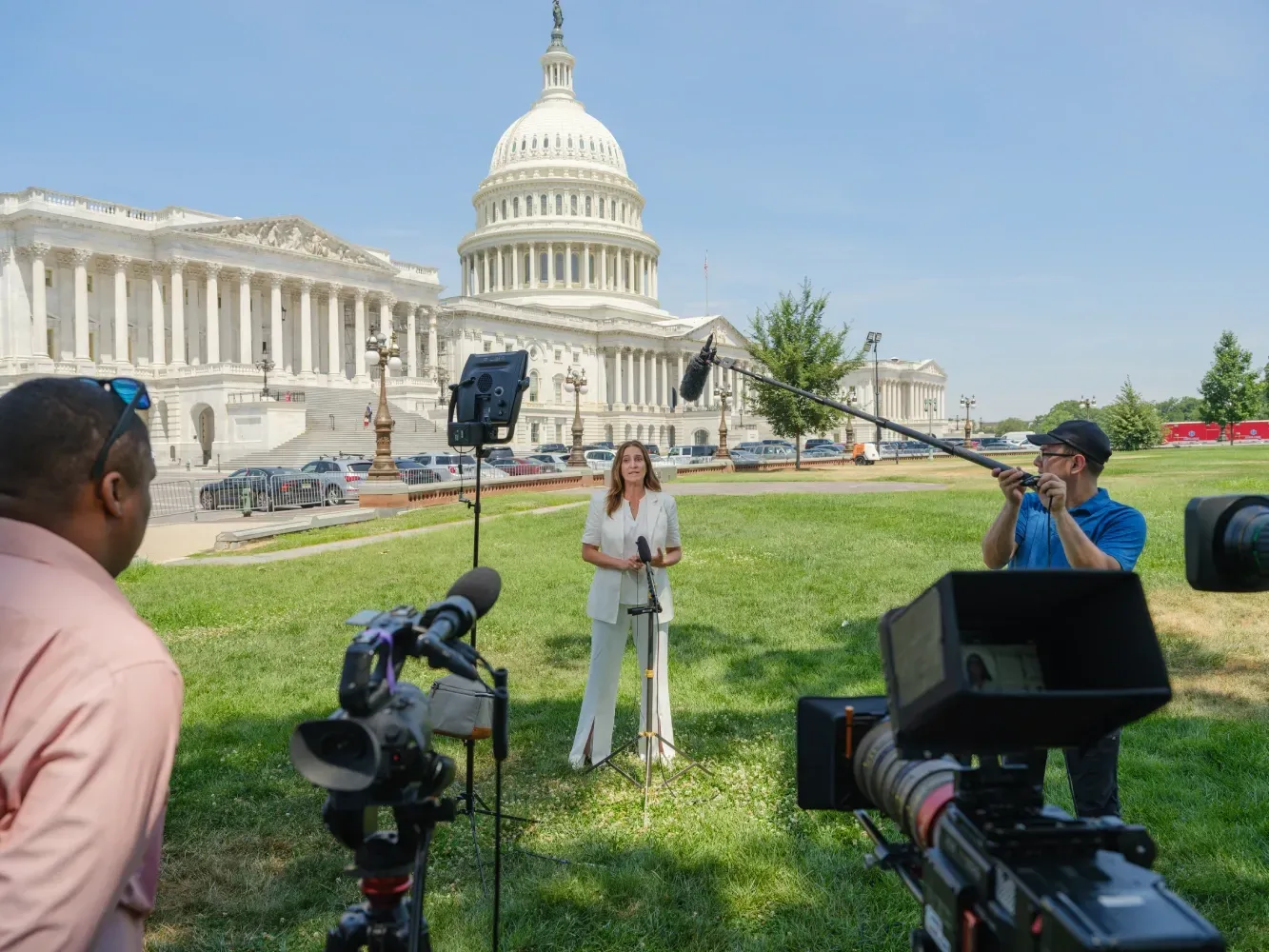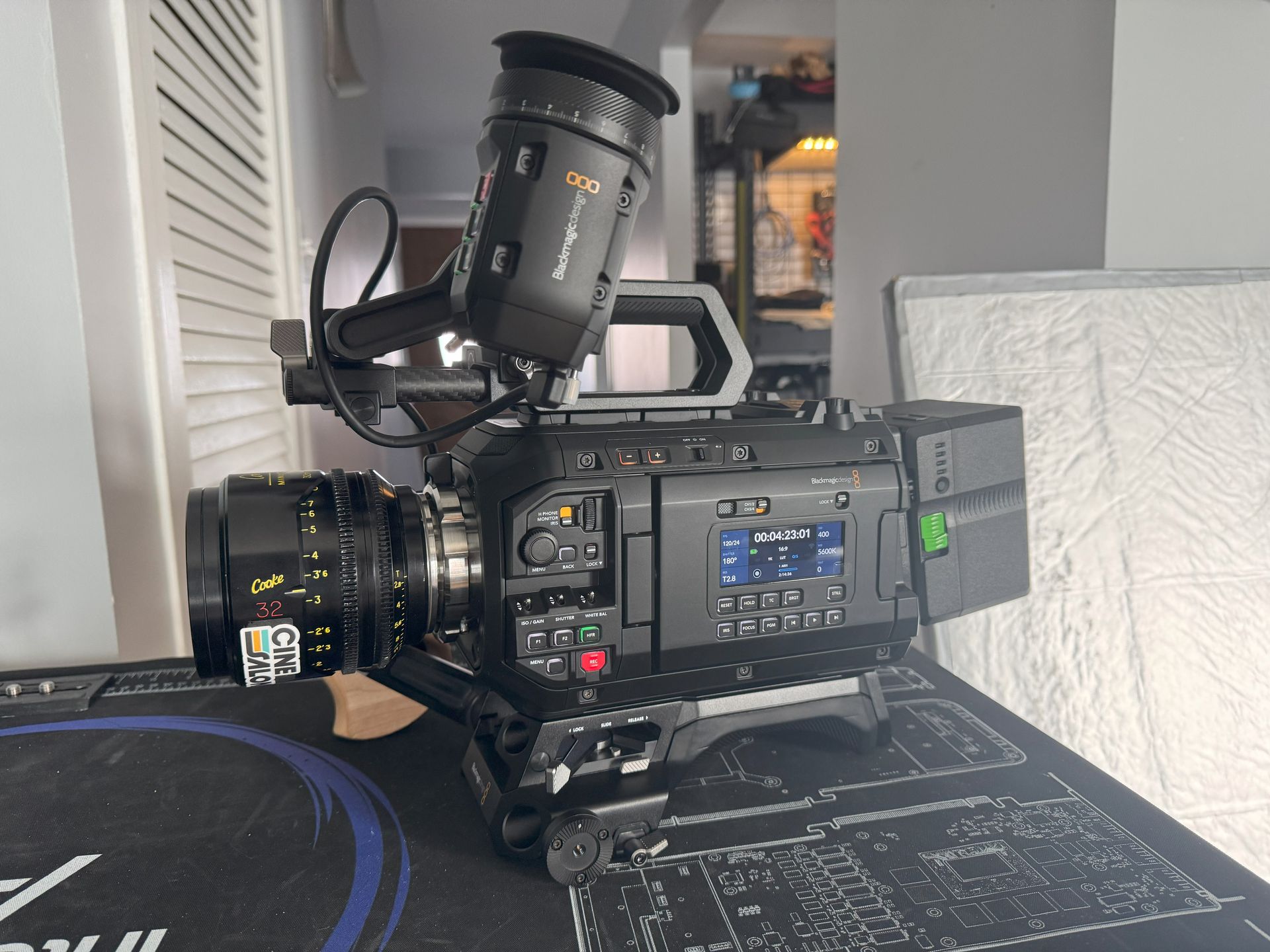What is video marketing? It's simple. Video marketing is the use of video to promote a cause or message. It is an important tool for any organization, especially for non-profits. Video can help you tell your story. It can help you reach a larger audience.
Video marketing involves planning, creating, and sharing videos. These videos can inform people about your cause. They can inspire people to support you. They can also showcase the work you do.
Importance of Video Marketing for Non-Profits
Why is video marketing key for non-profits? The answer is in the stats. Did you know that viewers retain 95% of a message when it's in video format? That's much more than text alone.
Videos can bring your cause to life. They can show the real impact of your work. Videos can put a face to your cause. That can create a strong emotional connection with your audience.
Video marketing can increase visibility. It can help you reach a global audience. You can share videos on social media, your website, or email newsletters. Videos can drive more traffic to your website. They can also increase engagement.
With videos, you can convey complex information easily. You can use visuals and sounds to tell a story. That makes it easy for viewers to understand your message.
Video marketing can also increase donations. A well-crafted video can inspire people to take action. It can motivate them to donate, volunteer, or advocate for your cause.
In short, video marketing is crucial for non-profits. It is a powerful way to tell your story, connect with people, and drive action. It is not something to ignore.
Understanding the Basics of Video Marketing
To use video marketing, you need to understand the basics. That includes knowing what makes a good video. You also need to know why people engage with videos. This knowledge will help you make effective videos.
Elements of Effective Video Content
What makes a good video? Here are some key elements.
- Good Story: Your video should tell a story. This will engage viewers and keep them watching.
- Clear Message: Make sure your video has a clear message. Viewers should understand what you want them to do.
- High Quality: Your video should look and sound good. This will make it more appealing to viewers.
- Relevant: Your video should be relevant to your audience. It should connect to their interests or needs.
Key Video Marketing Statistics Relevant to Non-Profits
Why should you use video marketing? The stats show why.
- Increased Retention: Viewers remember 95% of a video message compared to 10% when reading text.
- Increased Shares: Social video generates 1200% more shares than text and images combined.
- Increased Conversion: Landing pages with videos can increase conversions by 80%.
These stats show that video marketing can be very effective. It can help you achieve your goals. So, start using video marketing today.
In this guide, we'll walk you through video marketing for non-profits. We'll show you how to plan, create, and share videos. We'll also show you how to measure their success. So, let's get started!
Understanding the Basics of Video Marketing
Video marketing is a great tool. But it's also complex. This section will help. It will cover the basics. It will help you make great videos.
Elements of Effective Video Content
What makes a video effective? There are a few elements. Here they are:
- Story: Your video should tell a story. The story will pull people in. It will make them care. The story is the heart of your video.
- Message: Your video needs a clear message. This is the 'why' of your video. Why should people care? Why should they take action? Answer these questions in your video.
- Quality: Good quality is key. Crisp images. Clear sound. These things matter. They make your video enjoyable. They make people want to watch.
- Relevance: Your video needs to matter to the viewer. It should speak to their interests or concerns. This will make them more likely to engage.
How do you get these elements in your video? Let's look at each in detail.
Story: Start with a clear structure. Have a beginning, middle, and end. Use characters. They could be people you help. Or people who help you. Make sure there is conflict and resolution. This will keep people engaged.
Message: Be clear about what you want. Do you want donations? Volunteers? Awareness? Say it clearly. Make it easy for people to act.
Quality: Use a good camera. Edit the video well. Make sure the sound is clear. Bad quality can distract viewers. It can make them stop watching.
Relevance: Know your audience. Know what they care about. Make videos about those things. Show how you address those concerns. This will draw viewers in.
Key Video Marketing Statistics Relevant to Non-Profits
Video marketing can help your non-profit. Don't just take our word for it. The stats back it up. Here are a few key stats:
- Retention: People remember 95% of a video message. But they only remember 10% of a written message. This means your message sticks better with video.
- Shares: Social videos get more shares. They get 1200% more shares than text and images combined.
- Conversion: Videos help convert viewers to supporters. A landing page with a video can increase conversions by 80%.
These stats are impressive. They show the power of video. They show that video marketing works. So, why not use it for your non-profit?
The Power of Emotion in Video Content
People react to emotion. It's human nature. And video is great at triggering emotion.
How does this work? Let's see.
- Images: Video uses visuals. And visuals are powerful. They can show joy, sadness, or struggle. They can make viewers feel these emotions too.
- Sound: Sound is also powerful. A happy tune can make viewers feel good. A sad song can make them feel empathetic. Sound can shape how viewers feel.
- Story: Stories trigger emotions. They make people care. They make people want to help. Use story in your video to connect with viewers.
In short, use emotion in your videos. It will make your videos more effective. It will make viewers care. It will make them want to act.
This covers the basics of video marketing. Now you're ready for the next step. You're ready to create your video marketing strategy. Let's move on to that next.
Setting Video Marketing Objectives
Let's talk about goals. Every video needs a goal. The goal guides the video. It determines what the video should do.
A. Identifying Your Audience
First, identify your audience. Who are they? What do they care about? These answers are key.
The audience guides your video. It determines the style, tone, and content. It also determines where you share the video.
How do you identify your audience? Research. Look at who engages with you. Look at who supports you. Also, look at who you want to engage with.
B. Clarifying Your Message
Next, clarify your message. What do you want to say? What action do you want viewers to take? Be clear about this.
Your message guides your video. It helps you decide what to include. It helps you tell your story.
Your message also guides your call to action. This is what you want viewers to do. It could be donating, volunteering, or sharing the video. Make sure your message and call to action align.
C. Defining Success Metrics
Lastly, define your success metrics. How will you know if your video is successful? What will you measure?
There are different metrics you can use. Views, shares, comments, or donations. The metrics depend on your goal.
Your metrics will help you track your video. They will show if it's working or not. They will guide any adjustments you need to make.
Developing a Video Marketing Strategy for Non-Profit Organizations
Now, let's create a strategy. It's not enough to make videos. You need a plan. A strategy helps you be effective.
Content Strategy
What videos will you make? This is your content strategy. It depends on your audience and goals.
- Storytelling in Video Marketing: People love stories. Use them in your videos. They can be about your work, your impact, or your supporters.
- User-Generated Content: This is content from your audience. It could be testimonials or experiences. This content is authentic. It builds trust.
- Cause Awareness Videos: These videos talk about your cause. They educate viewers. They can help raise awareness.
- Behind-The-Scenes and Event Coverage: These videos show your work. They give viewers a peek behind the curtain. They can make viewers feel part of your work.
Distribution Strategy
Where will you share your videos? This is your distribution strategy. It depends on where your audience is.
- Social Media Platforms: Share your videos on social platforms. Choose platforms where your audience is.
- Email Marketing: Include videos in your emails. They can make your emails more engaging.
- Website Integration: Add videos to your website. They can make your website more interesting.
Engagement Strategy
How will you engage viewers? This is your engagement strategy. It helps you connect with your audience.
- Calls to Action: Ask viewers to do something. Donate, volunteer, or share the video. Make it easy for them to act.
- Interactivity in Videos: Make your videos interactive. Include quizzes or surveys. This can increase engagement.

Creating Engaging Videos for Non-Profit Organizations
It's time to make your videos. But how do you make them engaging? Here are some tips.
Video Creation Basics
First, let's cover the basics. They are key to good videos.
- Quality: Use a good camera. Make sure the sound is clear. Quality matters.
- Length: Keep your videos short. Most viewers have short attention spans.
- Captions: Add captions to your videos. They make your videos accessible. They also help viewers understand your video.
Techniques for Engaging Storytelling
Stories engage viewers. They make viewers care. So, use storytelling in your videos.
- Characters: Use characters in your stories. They can be people you help. Or people who help you.
- Conflict and Resolution: Show a problem and how it's solved. This keeps viewers engaged.
- Emotion: Use emotion in your stories. It makes viewers feel. It makes them want to help.
Leveraging User-Generated Content
User-generated content is powerful. It's authentic. It builds trust. So, use it in your videos.
- Testimonials: Use testimonials from your supporters. They can share their experiences. This can inspire others.
- Experiences: Let people share their experiences. This could be people you help. Or people who help you.
Promoting Your Non-Profit Videos
You've made your videos. Now, you need to share them. This is your promotion strategy.
Promoting on Social Media
Social media is a great place to share videos. Here's how to do it.
- Choosing the Right Platform: Use platforms where your audience is. Each platform is different. Adjust your videos for each one.
- Optimizing Your Posts: Use hashtags. Write engaging captions. These can help your videos reach more people.
- Engaging with Viewers: Reply to comments. Share viewer posts. Engagement can boost your reach.
Leveraging Email Marketing
Email is another place to share videos. It's direct. It's personal. Here's how to do it.
- Including Videos in Newsletters: This can make your newsletters more engaging. It can boost open rates.
- Using Video Thumbnails: A thumbnail can entice readers to watch. Make it interesting. Make it clickable.
Utilizing Your Website
Your website is also a good place for videos. Videos can make your site more dynamic. They can improve SEO. Here's how to use them.
- Adding Videos to Blog Posts: This can make your posts more engaging. It can also improve SEO.
- Creating a Video Gallery: This can showcase your work. It can keep visitors on your site longer.

Measuring Success and Adjusting Your Video Marketing Strategy
You've made and shared your videos. Now, it's time to measure your success. How do you know if your videos are working?
Tracking Your Metrics
First, track your metrics. These are the numbers that show if your video is effective.
- Views and Watch Time: How many people watched your video? And for how long?
- Shares and Comments: How many people shared or commented on your video?
- Clicks and Conversions: How many people took the action you wanted?
Analyzing Your Metrics
Next, analyze your metrics. What do they mean? Are they good or bad?
- Identifying What Worked: What aspects of your video got good results?
- Recognizing What Didn't Work: What aspects of your video didn't perform well?
Adjusting Your Strategy
Lastly, adjust your strategy. Use your metrics to guide you.
- Improving Your Videos: Use your analysis to make better videos.
- Updating Your Distribution: Change where or how you share your videos, if needed.
- Refining Your Engagement: Adjust how you engage with viewers, based on their responses.
Top Video Marketing Tools for Non-Profit Organizations
You know how to make videos. You know how to share them. But, some tools can help. They can make video marketing easier.
Video Creation Tools
First, let's look at tools to make videos.
- Online Video Editors: These can help you edit your videos. They're easy to use.
- Animation Tools: These can help you create animated videos. They're engaging.
- Subtitle Generators: These can help you add captions to your videos. They're important for accessibility.
Social Media Management Tools
Next, let's look at tools to manage social media.
- Scheduling Tools: These can help you schedule your posts. They save you time.
- Analytics Tools: These can help you track your metrics. They show you how your videos are doing.
Email Marketing Tools
Lastly, let's look at tools for email marketing.
- Newsletter Tools: These can help you create and send newsletters. They can also track opens and clicks.
- Email Video Integration Tools can help you add videos to your emails. They make it easy.
Case Studies of Successful Video Marketing in Non-Profit Organizations
Let's look at real examples. These are non-profits that use video marketing well. They can inspire you.
Case Study 1: Charity: Water
Charity: Water is a great example. They used video marketing to raise awareness.
- The Video: They made a video about their mission. It was emotional. It was inspiring.
- The Results: The video got millions of views. It raised a lot of funds.
- What We Can Learn: Emotional stories work. They inspire people to act.
Case Study 2: Pencils of Promise
Pencils of Promise is another example. They used video marketing to share their impact.
- The Video: They made a video about their work. It showed the schools they built. It showed the children they helped.
- The Results: The video got a lot of shares. It brought in new supporters.
- What We Can Learn: Show your impact. It makes people want to help.
Case Study 3: World Wildlife Fund
World Wildlife Fund used video marketing for advocacy.
- The Video: They made a video about climate change. It was informative. It was compelling.
- The Results: The video got a lot of engagement. It raised awareness about the issue.
- What We Can Learn: Use videos for advocacy. They can spread your message far and wide.
Common Mistakes in Non-Profit Video Marketing and How to Avoid Them
Everyone makes mistakes. But you can learn from them. Here are common mistakes in non-profit video marketing. And how to avoid them.
Not Knowing Your Audience
This is a big mistake. You need to know who you're talking to.
- The Problem: Your message can miss the mark if you don't know your audience.
- The Solution: Research your audience. Understand their needs. Tailor your message to them.
Neglecting Storytelling
Storytelling is important. It's what makes people connect.
- The Problem: Without storytelling, your videos can be boring.
- The Solution: Use stories in your videos. Make them emotional. Make them relatable.
Ignoring Video SEO
SEO is important. It helps people find your videos.
- The Problem: Without SEO, your videos can get lost in the crowd.
- The Solution: Use keywords. Use descriptions. Make your videos easy to find.
Conclusion
Video marketing is powerful. It can help non-profits make a big impact. But, it can seem hard. This guide can help.
Recap
Let's recap what we learned.
- The Basics: We learned why video marketing is important. We learned the types of videos to make.
- The Strategy: We learned how to plan your video marketing. We learned how to share your videos.
- The Follow-up: We learned how to measure success. We learned how to adjust your strategy.
- The Tools: We learned about tools to help. They can make video marketing easier.
- The Examples: We looked at real examples. We learned from their success.
- The Mistakes: We learned common mistakes. We learned how to avoid them.
The Takeaway
What's the takeaway? Video marketing can be effective. It can help you reach more people. It can help you make more impact.
The Next Steps
So, what's next? Start planning your video marketing now. Make your videos. Share them. Measure your success. Learn from it. Adjust your strategy. Keep improving.
In summary, video marketing is a journey. It can be a long one. But, it's worth it. It can help your non-profit make a big impact. It can help you make a difference. So, start your journey today. Use this guide. It will help you on your way.

Get total clarity on your video marketing and paid media with our FREE comprehensive data audit.







